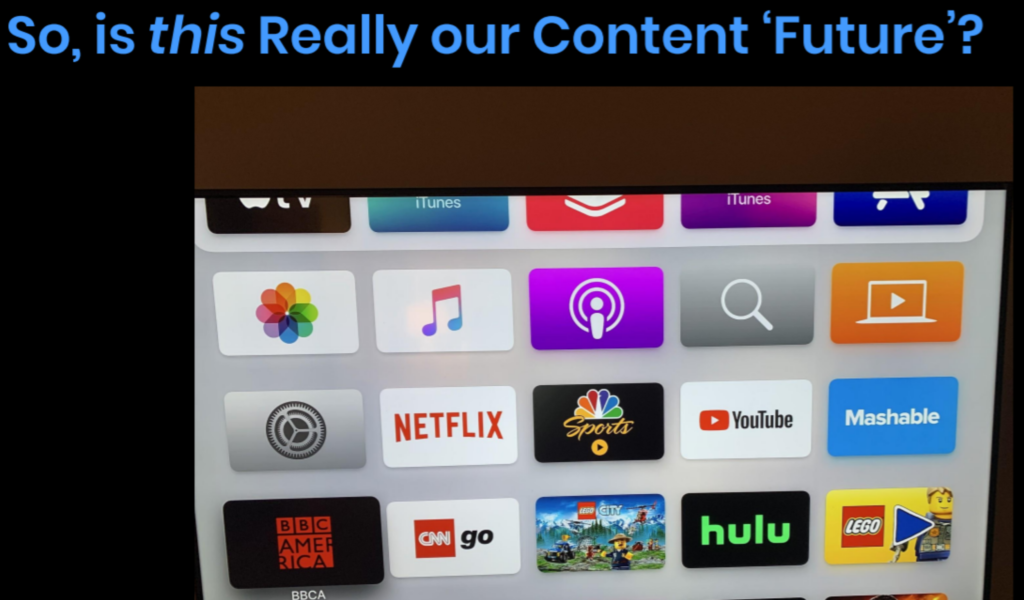M+E Daily

Eluvio CEO: This is a ‘Black Swan’ Moment for Extreme Innovation
Story Highlights
Despite the crisis represented to at least parts of the media and entertainment industry by the ongoing pandemic and other current challenges, this is also a “Black Swan” moment that calls for extreme innovation, according to Michelle Munson, Eluvio CEO and co-founder.
During a May 27 presentation at the Hollywood Innovation and Transformation Summit (HITS) Live event, she highlighted how the new Eluvio Content Fabric, a dynamic, efficient, secure and cost-effective way to deliver ultra-low latency video globally – without Content Delivery Networks, cloud transcoding or databases – rises to the challenges the industry faces and allows content owners to seize direct control over distribution and monetization.
Pointing to the recent launch of HBO Max and the “ensuing additions to the streaming war,” Munson said during the presentation “Windowless Video Distribution: Embracing this “Black Swan” Moment,” that “this couldn’t be a more timely topic.”
After all, she noted: “We have, hopefully for better and not for worse, entered a time of no release windows.”
Calling it a “Black Swan” moment, she said the COVID-19 pandemic, “the way the industry has changed and all that’s going on has really been driven by sheer randomness” that is “very large in magnitude and has dominant and sweeping effects that are changing everything” in the media and entertainment industry.
She also pointed to another concept, also coined by black swan theorist Nassim Nicholas Taleb — antifragility, saying: “Randomness, like we’re experiencing right now, is not only good, but it’s actually essential to reveal what’s robust and lasting.”
Theatrical distribution “right now is in an utterly fragile and sort of unknown state,” she noted. While theatrical film releases have been put on hold, many movies have been released digitally, including “Trolls,” which recently hit the $100 million mark, she told viewers.
Munson pointed to the various advantages and disadvantages of digital distribution vs. theatrical release windows.
Advantages of digital releases include: Exhibition venue flexibility; immediate time to release; more consistent revenue sharing to the distributor (which is 100% if the distributor owns the platform); reduced distribution costs; and increased digital re-monetization, she noted.
 However, the drawbacks of digital distribution are that it can be harder to reach a mass audience, there is lower average revenue per viewer, and traditional remerchandising is harder, according to the presentation slide she pointed to.
However, the drawbacks of digital distribution are that it can be harder to reach a mass audience, there is lower average revenue per viewer, and traditional remerchandising is harder, according to the presentation slide she pointed to.
The negatives of digital distribution are among the positives for traditional release windows that start with theatrical releases, she noted. However, the negatives of the traditional release window model include: The potential for bankruptcy during a pandemic like we are seeing now; long, restrictive releases; and the high costs for distributors and consumers.
Countless articles are arguing digital distribution will ultimately prevail, Munson said.
Meanwhile, there are “some real challenges for publishers and consumers” today, she told viewers.
Publisher challenges include: Distributors keeping much of the revenue (when they are not the same organization); cost/sustainability; data; bundled offerings; and creativity, she said.
Consumer challenges, Munson noted, include: “Subscription fatigue is clear”; it is often hard to find the content people want to see; the cost; personalization and “choice” only come at a premium; and the potential for a new exhibition monopoly (a “mega” over-the-top streaming service).
Consumers want the content, not the platform, Munson pointed out, adding there is one more challenge presented to consumers: “Is an entirely virtual existence natural for humans?”
However, there is a “possibility that we can innovate our way through this in a profound result that benefits publishers, that benefits the audience and benefits third parties, and even allows for ways that exhibitors could continue to stay in business in forms that are really human,” Munson went on to say.
“We need a different way to think about our content,” she told viewers, adding: “We also need a substrate that’s able to work highly efficiently” and “allows for the streaming volumes that we’re after to happen without Internet meltdown” at a “truly sustainable” cost level.
The Eluvio Content Fabric provides those elements, offering a new global substrate eliminating the need for transcoding, databases, microservices and CDNs, she said. Other advantages include its single software stack, she said, adding the Fabric can be used to power media properties.
Content already using the Fabric include the delayed, upcoming James Bond film “No Time to Die” from MGM and United Artists, as well as Fox’s TV show “The Masked Singer.”
Click here for the presentation slide deck.
The May 27 HITS Live event tackled the quickly shifting IT needs of studios, networks and media service providers, along with how M&E vendors are stepping up to meet those needs. The all-live, virtual, global conference allowed for real-time Q&A, one-on-one chats with other attendees, and more.
HITS Live was presented by Microsoft Azure, with sponsorship by RSG Media, Signiant, Tape Ark, Whip Media Group, Zendesk, Eluvio, Sony, Avanade, 5th Kind, Tamr, EIDR and the Trusted Partner Network (TPN). The event is produced by the Media & Entertainment Services Alliance (MESA) and the Hollywood IT Society (HITS), in association with the Content Delivery & Security Association (CDSA) and the Smart Content Council.









